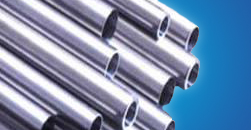304L stainless steel pipe is very expensive and screwing up a welding job will prove costly. With so many welding options and methods available, welders can find themselves stuck in a juggling act between balancing the costs of the welding equipment and justifying the additional expense of certain welding techniques to the client. Here we will address the top five welding myths when working on stainless steel 304L pipes.
Myth #1. Stainless Steel Pipes Have To Be TIG Welded
Many welders consider it a necessity to invest in costly tungsten inert gas (TIG) welding equipment. In fact, there is no reason not to use shielded metal arc welding (SMAW) unless the client stipulates otherwise. If the customer doesn’t mind SMAW welding or their instructions don’t call for TIG, SMAW will save you time and boost your profits as a welder. Welders typically TIG-weld stainless steel pressure pipes but even welders with the proper set up will use SMAW where possible.
Myth #2. Hydrogen Is The Best For Increasing Heat Input
When TIG welding stainless steel tubes, many welders like to add hydrogen to the argon shielding gas in order to increase heat input. Hydrogen gives a cleaner weld that argon alone and does increase input but it comes with certain drawbacks. In certain instances, adding hydrogen to the argon can produce hydrogen cracking and create porosity in the tubing. For welders looking to increase heat input and weld faster or with greater penetration, helium is a smart choice.
Myth #3. Root Gap Is Unimportant
When welding stainless steel tubing, the root gap is often overlooked. In fact, you must ensure that your root gap is wide enough to get good penetration on the pipe weld. On stainless 304L pipe, this gap should be set at 1/8th inch for proper penetration while running the TIG at 105 with 1/8 TIG wire. This prevents under fill where the root surface extends below the surface of the pipes and produces incomplete joint penetration.
Myth #4. TIG Welding Is More Expensive
One of the reasons for welding stainless steel pipes with SMAW is that is it quicker and therefore more economical even if TIG equipment is available. In fact, TIG isn’t always more expensive and is generally only more costly for welding thick sections of piping. For thin pipes, SMAW can be used to increase productivity and revenues without compromising the quality of the weld joins.
Myth #5. Weld Quality Is Determined By Pipe Quality
Appropriate engineering decisions need to be applied to determine the quality and the type of joint required on any pipe welding job. It is actually the filler metal and not the quality of the pipe steel that determines the quality of the weld. For example, food, beverage and pharmaceutical applications require piping with a low carbon content to minimize corrosion. Selecting a 304L pipe from a quality stainless steel pipe supplier and welding with a standard 308-filler metal would raise the carbon content on the joint and increase corrosion.
